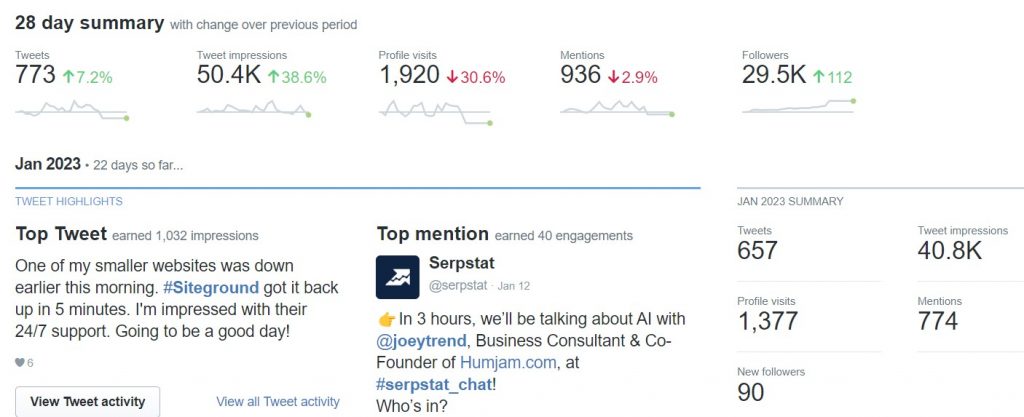Trying to stand out on social media gets harder every year. That’s where Social Data Analytics steps in, changing the way you spot trends and track what your audience really wants. It’s key for understanding not just the raw numbers, but also the “why” behind every like, share, and click.
If you’re a social media marketer, learning how to read this data isn’t just smart—it’s become a must. You’ll turn social feedback into strategic insights, helping you improve results, cut wasted time, and boost engagement.
At Inspire To Thrive, you get advice shaped by decades of hands-on experience in both traditional and digital marketing. The goal is clear: give you the tools and knowledge you need to grow your online presence with confidence.

Table of Contents
What is Social Data Analytics and Why Does It Matter?
Peeking behind the curtain of your favorite social media platform isn’t just for tech wizards or data scientists anymore. Social Data Analytics gives you a clear picture of what’s happening every time someone likes, comments, or mentions your brand.
By understanding these numbers, you move from guessing to knowing exactly what works—and what needs a tweak.
If you want your marketing strategy to click with your audience, you can’t afford to ignore this. Let’s break down what Social Data Analytics really means and why it matters for marketers like you.
Defining Social Data Analytics
Social Data Analytics means collecting and analyzing data from social media platforms to spot trends, measure engagement, and track brand health. Think of it as taking the social media chatter and turning it into clear answers you can use to shape your strategy.
What sets it apart from other analytics? It isn’t just about counting followers or tracking likes. You get a deeper look at how real people interact, what they talk about, and how they feel about your brand.
Key Metrics Every Social Media Marketer Should Know
You don’t need every number in the book for social media data analytics—just the right ones. The main metrics that make a difference include:
- Engagement Rate: Tracks likes, shares, and comments as a percentage of followers. Shows which content gets a reaction.
- Impressions and Reach: Impressions count how many times your content was shown. Reach tells you how many unique users saw it.
- Sentiment Analysis: Measures if mentions are positive, negative, or neutral. Great for tracking brand mood during campaigns.
- Share of Voice: Shows how much of the conversation your brand owns compared to competitors.
- Click-Through Rate (CTR): Tells you how many people click a link in your post versus how many saw it.
Focus on these stats to find out what sparks real interest—and what gets ignored.
Identifying and Monitoring Key Performance Indicators For Social Data Analytics
Before you begin to assess the data from your social media accounts, you need to first identify your key performance indicators, often known as KPIs. Use KPIs that are aligned with the overall strategy of your company.
In this part of the process, working with a professional social media marketing agency can help you accurately determine your KPIs. This makes the whole task easier for you.
After you have determined them, the next step is to choose the appropriate tools that will assist you in data collecting and analysis. Keep in mind that you should choose a tool that is user-friendly.
Marketers will be able to justify the ROI and recognize the worth of social media in the development of their businesses if they use the data provided by social media platforms.
For example, it is not difficult to determine which platforms are the most suitable for the brand. Not only the platforms but the kinds of content that are most popular among the target audience.
Target Content Based On Interests
Social media analytics will offer information on the kind of content and marketing initiatives that are most likely to generate the most buzz. These will provide the most interest in the digital sphere.
Because of this information, businesses are in a better position to determine the appropriate style of content to publish. Not only that the influencers and other crucial figures are there in a successful digital marketing campaign.
Monitor Your Social Data Analytics
As a result, you have to regularly monitor all of the pertinent data related to the online actions of your business. Language, tone, sentiment, and keywords are some of the major factors that may be used.
There are used to assess actual perception vs. the intended brand perception. Other crucial elements include the brand itself.

Numbers alone don’t tell the whole story. Social Data Analytics digs deeper with sentiment analysis, helping you “read the room” at scale.
- Measure the tone behind mentions, comments, and reviews.
- Respond to negative feedback quickly to protect your brand image.
- Celebrate wins and share positive feedback to build trust.
This level of understanding supports genuine relationships with your community.
Target Content Based On Social Media Platforms
Brands have the ability to evaluate data and determine the indicators. Indicators that are specific to each social media platform with the identified KPIs.
As a result, marketers have to have a grasp of how the performance of certain types of content varies across various social media networks.
Users who manage a Facebook business page have access to a tool called Facebook Insights. The insights allow them to analyze many KPIs including likes, responses, post reach, engagement, and impressions.
A 28-day summary is available using XTwitter Analytics. The analytics can disclose the mentions, number of followers, engagement rate, number of link hits, and other statistics.

Google Analytics has the ability to give crucial analytics on numerous social media sites. Thus allowing companies to discover more about leads, sales, and visit lengths among other features.
Clear ROI for Social Media Marketers
In the end, Social Data Analytics makes it possible to show what your efforts achieve—the numbers don’t lie.
- Prove which posts, ads, and campaigns generate leads or sales.
- Justify spending with clear, trackable outcomes.
- Share wins (and learn from misses) with team members and clients.
You’ll know exactly where your time and budget pays off, giving you confidence each time you present results.
Choose the Right Social Data Analytics Tools
The right analytics tool makes everything easier. But with so many options, it can feel like picking a needle out of a haystack. Here’s a rundown of options and what to consider.
Popular Choices:
- Native Tools: All major platforms offer free built-in insights. Facebook Insights, Instagram Analytics, X (Twitter) Analytics, LinkedIn Analytics, and TikTok Insights.
- Third-Party Platforms (Paid and Free):
- Hootsuite: Great for scheduling and unified analytics. Good for teams.
- Sprout Social: Known for detailed reporting and competitor analysis.
- Agorapulse: My all-time favorite to use that sends white-glove reporting to clients on every data point imaginable.
- Brandwatch: Strong in sentiment analysis and trend spotting.
- Google Analytics: Pairs with your website for tracking traffic from social.
- Buffer Analyze: User-friendly and affordable.
- BuzzSumo: Excellent for seeing what content performs best across channels.
- Creator Buddy for X Twitter. This tool shows you history of an X account and what has worked and what hasn’t along with future suggestions. The AI used for this tool is in real time.
How to Choose the Best Tool for You:
Think through these factors before diving in:
- Budget: Free tools work for basics; paid solutions offer deeper insights and integrations.
- Features: Make a list of must-haves. Do you need real-time alerts, sentiment scoring, or content recommendations?
- Compatibility: Ensure your tool pulls data from all the platforms you use.
- Ease of Use: If the dashboard looks like rocket science, your team won’t use it.
- Support & Training: Some tools, like Sprout Social and Agorapulse, stand out for customer help and learning resources.
Test a few with free trials before picking your favorite when looking for social media data analytics.
Final Thoughts Using Social Data Analytics
You hold the keys to a smarter, more actionable marketing strategy with Social Data Analytics. By tuning in to what your audience really says and does on social platforms, you can cut through the noise and build campaigns that actually connect and convert.
Real wins come when you use this data not just for tracking, but for making better decisions every day.
Don’t let your insights sit idle. Start using Social Media Data Analytics to tweak your messaging, fine-tune your timing, and stay a step ahead of the competition. If you want a deeper dive or hands-on support to maximize your results, Inspire To Thrive offers tailored tools and training to boost your growth.
Ready to see what your numbers reveal? Social media analytics is one of the best ways to gauge your performance. It will ensure that your marketing efforts are successful.
- 5 Top Tips for Social Realtors on X (Simple Social Media Management) - December 20, 2025
- Instagram Reels On TV: Should Your Content Hit The Big Screen? - December 18, 2025
- Valuing a Blog Business: 9 Mistakes That Lower Your Price - December 17, 2025




Hi Ali, thank you. Yes, many do not pay attention to them. It played a bigger role when I first started. Now SEO plays a much bigger role. I also think social media has become so fragmented. Groups on various networks do better than just posting on the main feed. Thanks for coming by Ali and have a great day.
Hey Lisa!
A great read. People often ignore their social data analytics. They consider social media as the biggest marketing channel, but fail to focus on their analytics to tweak their marketing strategy.
As a content marketer, what impact do you think social media has brought to your blog?
Does it play a pivotal role or a secondary role in marketing your blog?